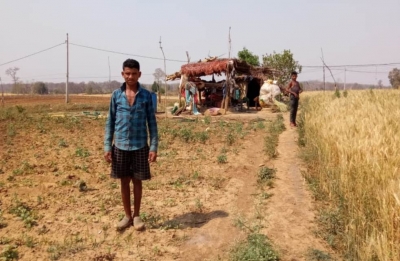

India's poverty level diminishes
India has pulled out 451 million people out of poverty in the last 15 years—between 2005-06 and 2019-21, a United Nations report revealed yesterday.
The data throws up some important facts, which need detailed analysis.
First, this clearly shows that the social benefit schemes aimed at the poor and vulnerable have been successful in India. Second, job generation has picked up steam but these are not getting reflected in data collection due to weak sampling in the unorganized sector and third, anecdotal evidence based-indices measuring hunger and happiness have little credibility.
“Notably, India saw a remarkable reduction in poverty, with 415 million people exiting poverty within a span of just 15 years (2005/6–19/21),” the UN report said.
In 2005-06, India had about 645 million people who were in multidimensional poverty. The number declined to about 370 million in 2015-16 and 230 million in 2019-21. Notably, several analyses in the last two years suggested that India’s poverty level increased due to the Covid shocks.
The UN ranking will give some cheer to Indian policymakers as this would further strengthen India’s position on the global platform. “Global rankings directly impact Investments, sovereign ratings and trade flows. We need to move away from perception-based indices,” Sanjeev Sanyal, Member, Economic Advisory Council to the Prime Minister, earlier told India Narrative.
In fact, EAC-PM in its report published in April has highlighted that the multiple government schemes targeted at the country’s poor have reached the beneficiaries without any discrimination and in certain cases the minority community has gained more than others.
The State Bank of India also in its Ecowrap analysis noted that the Centre’s direct transfer of payments into bank accounts has added Rs 75,000 to a household per annum. That apart, a higher procurement of rice and wheat especially in “relatively laggard” states such as Assam, Bihar, Chhattisgarh, Jharkhand, Madhya Pradesh, Odisha, Uttar Pradesh, Uttarakhand and West Bengal has largely helped in bridging the inequality gap, it added.
A higher procurement in these states has not only benefited the poorest of the poor in terms of subsequent free distribution of food grains but it may have also put money into the hands of smaller and marginal farmers, with distributional impact, the SBI said.
Along with India, countries like China, Cambodia, Vietnam and Indonesia are also included in the list.
Also read: India lower than Pakistan, Sri Lanka on Happiness Index: Is it believable?
US President Donald Trump on Saturday (US local time) called the continuation of the trial…
Protestors in Serbia took to the streets of Belgrade and demanded an early election, as…
The Ministry of External Affairs (MEA) on Sunday strongly rejected the Pakistani Army's claims, where…
Indian Army strengthens ties with Russian Land Forces at the 4th Indo-Russian Inter-Governmental Commission (IRIGC)…
The Indo-French Joint Military Exercise SHAKTI-VIII continues to strengthen operational interoperability and mutual cooperation between…
Prime Minister Narendra Modi attended the centenary celebrations of the revered Jain spiritual leader Acharya…